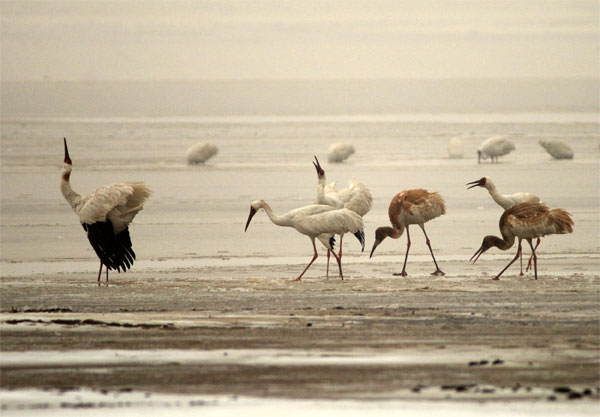 Adult and juvenile Siberian Cranes at one of the sublakes of Poyang Lake in January 2011 after heavy snowstorms. These cranes are human intolerant and difficult to photograph in the wild. Photo by Iryna Dronova
Adult and juvenile Siberian Cranes at one of the sublakes of Poyang Lake in January 2011 after heavy snowstorms. These cranes are human intolerant and difficult to photograph in the wild. Photo by Iryna Dronova
Poyang Lake, the largest freshwater lake in China and a Ramsar wetland conservation site, provides important wintering habitat for 300 bird species including a number of endangered waterbirds. Among them is the only surviving wild population of critically endangered Siberian White Cranes (Grus leucogeranus).
Various threats on the ecological integrity of the Poyang Lake system and its habitat come from hydrological dam projects, land use changes, and other human activities, creating an urgent need to improve the scientific understanding of this unique wetland environment.
Professor Peng Gong and PhD student Iryna Dronova are applying remote sensing, GIS, and field surveys to study the seasonal variation in plant functional types that not only provide critical habitat but are key players in Poyang lake’s biogeochemical cycles. They are also using waterbird survey data to further examine how wetland vegetation and non-vegetated features, including human land uses, are related to habitat characteristics, waterbird diversity and the presence of critically endangered species such as the Siberian White Crane.
Update August 2013: Iryna completed her PhD in the spring of 2013 and is now a postdoctoral researcher in the Gong Lab.
Learn more:
- Dam proposal for Poyang Lake causes wave of controversy [News article from China Daily]
- The International Crane Foundation's Poyang Lake Ecology Study
